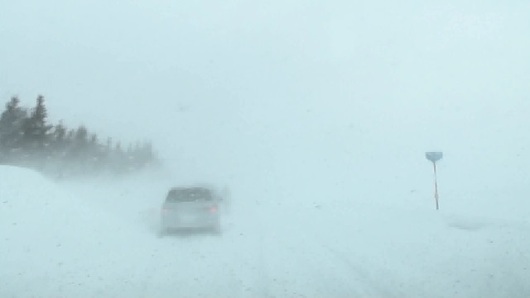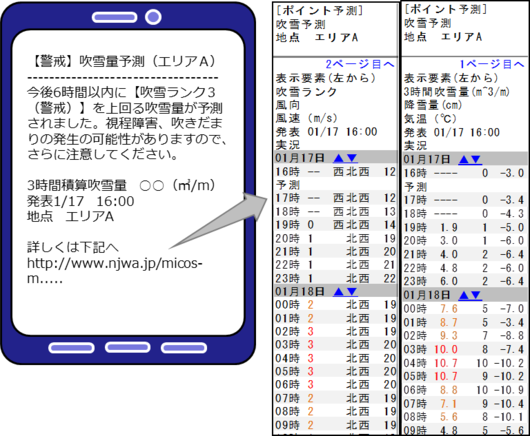Blowing Snow Transport Forecasts Information – How to Prepare for Blowing Snow
Services
JWA forecasts whether an upcoming blowing snow will be as severe as the past events that caused traffic disruptions and predicts the time of day it will occur.
Every year, blowing snow and drifting snow conditions cause traffic disruptions in snowy and cold regions such as Hokkaido. In recent years, the frequency of severe snowstorms caused by developed low-pressure systems has increased, leading to more frequent traffic disruptions. Therefore, during severe blowing snow conditions, measures are taken to prevent the escalation of related disasters, such as road administrators promptly implementing traffic restrictions. ‘Blowing Snow Forecast Information’ supports road administrators and maintenance contractors in responding quickly to blowing snow, and is also widely used by other transportation operators, including railway service. JWA utilizes its own weather analysis and forecast data, based on existing research literature, to categorize and forecast the severity of blowing snow into advisory and warning levels.
Features
Provide hourly forecasts of ‘blowing snow levels’ for the next 24 hours on websites accessible via cell phones, smartphones, and PCs. Locations can be specified using 1 km mesh units, and email alerts can be sent if the designated blowing snow levels (1 to 3) are exceeded.
Track Record of Information Provision; Hokkaido Regional Development Bureau of Ministry of Land, Infrastructure, Transport and Tourism of Japan,
Construction Management Department of Hokkaido Prefectural Government, and
Aomori Prefectural Government.
◆Blowing snow levels (for road administrators and maintenance operators)
Blowing snow level 1: Traffic disruptions due to blowing snow are unlikely.
Blowing snow level 2: There is a chance of traffic disruptions due to blowing snow.
Blowing snow level 3: There is a high probability of traffic disruptions due to blowing snow.


Applications
Disaster prevention measures for blowing snow events, traffic control decisions in road management, and support for safety measures.
Description of terms
Blowing snow transport: the amount of snow transported through a unit width perpendicular to the wind direction in a unit of time.
